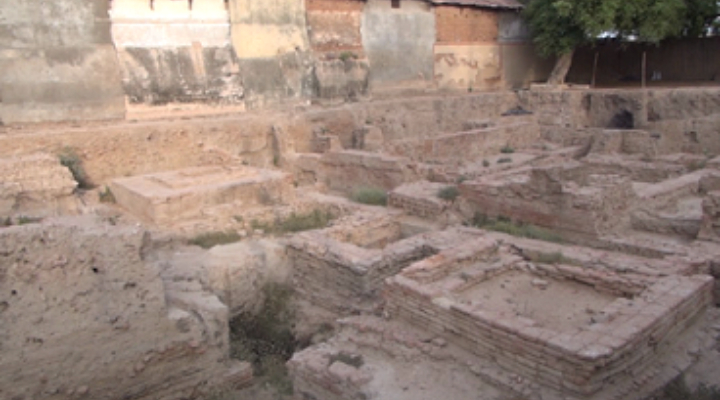We found similar evidence at Devaki Mori near our village. During excavations, they found a gold box, which contains Bhagwan Buddha’s ashes. These are lying in M.S. University at Baroda. It occurred to me that nowhere in the world can you hold the ashes of Lord Buddha in your hand. We alone have this treasure. Therefore, we are planning to construct a big temple of Lord Buddha here at the exact spot from where the box of ashes was excavated. It won’t be built by the government; instead we will motivate private bodies to do it. I want to create an institutional frame work in collaboration with Taiwan, Japan, Sri Lanka, Thailand, and Singapore. Its architecture should also have a global appeal, not be limited to traditional Buddhist temples….
We signed a Memorandum of Understanding (MOU) with the Sri Lankan government that they would bring Buddhist tourists from Sri Lanka and we would take Gujaratis for their Ram Trail. This is just the beginning of our attempts to develop the Buddhist heritage and build close links with Buddhist countries.
Ahead of Chinese president Xi Jinping’s visit to Gujarat, an article was posted on PM Modi’s website in English and Mandarian, talking at length about the “Buddhist heritage in Gujarat.” During Jinping’s visit Modi personally took the Chinese president to a photo exhibition which displayed all that the excavated sites had yielded.
There is no denying that Buddhism has left a deep imprint on PM Modi’s life. The enthusiasm with which he talked about the excavation of Buddhist sites led me to take a special trip to Vadnagar to go and see them for myself. This ancient city with a 2500 year old known history was the earliest capital of Gujarat. It is referred to as Anartpur in Mahabharata and has numerous historic sites, monuments and ancient temples in and around the area.
But instead of feeling uplifted I got one of the biggest shocks of my life witnessing the pathetic plight of the excavated Buddhist ruins. The excavation may have started with much fanfare but the place is so neglected that there wasn’t even a signboard to mark the site. The excavation itself is incomplete since people have built houses over the site where the Buddhist monastery once stood.
But even the part that is excavated lies in a sorry state with wild grass growing in the dug up portions. There was a filthy drain flowing right outside the excavation site. No effort had been made to protect the site. All one saw was a pretense of a fence with broken down bamboos demarcating it from the gali in which it is situated. These videos clips speak for themselves. https://www.youtube.com/watch?v=67UrQN7D9UU&feature=youtu.be
 |
| The open drain bang outside the excavation site |
 |
| There wasn’t even a signboard to mark the excavation site when I visited the place in June 2014 |
 |
|
|
 |
|
The immediate neighbourhood of the excavation site
|







this is sad truth of this govt. I m sure in coming years this site surrounded by many temples.
n then they will link this site with epic n myth.
Buddhist shrines r neglected, some are on verge of convert to hindu temples.